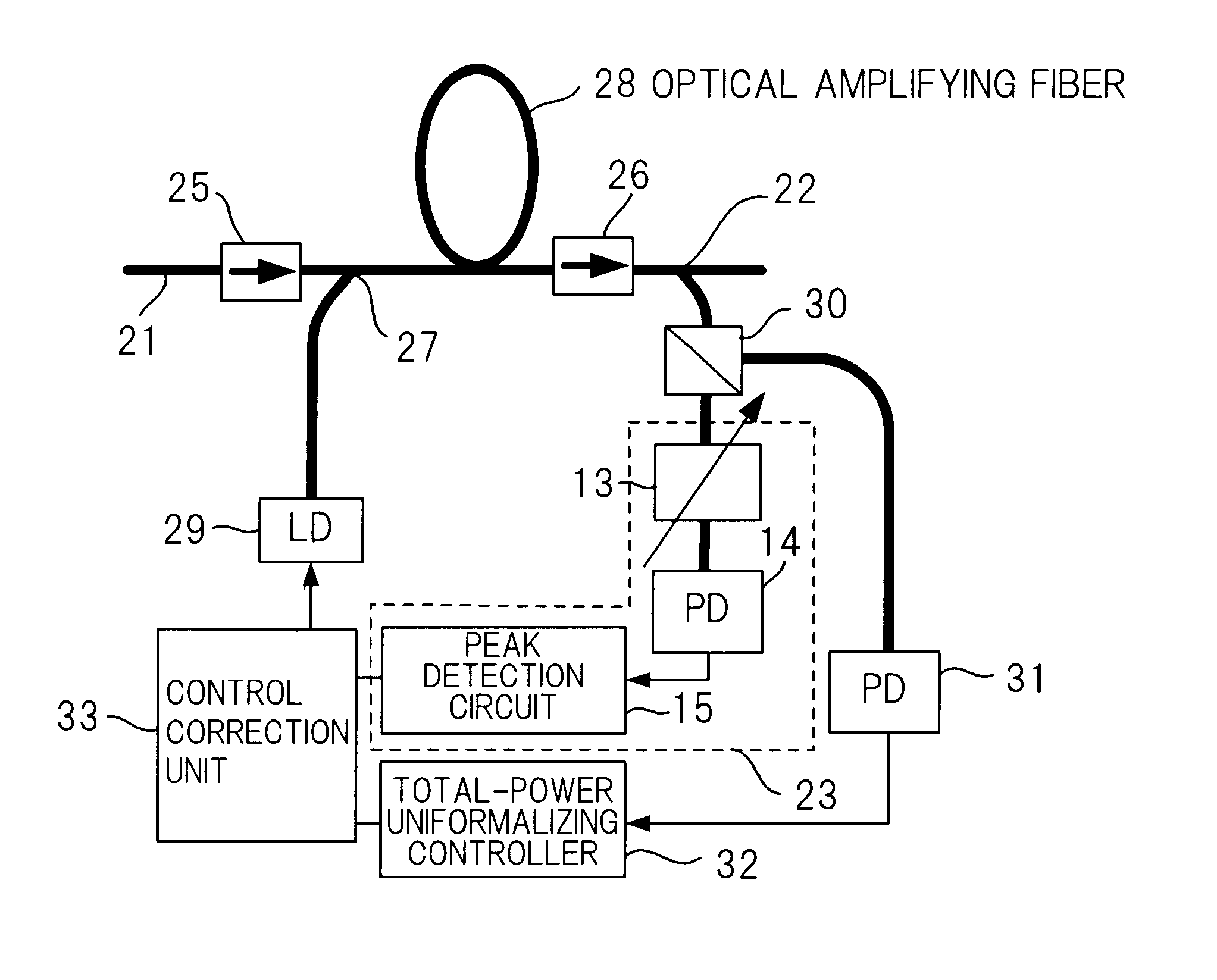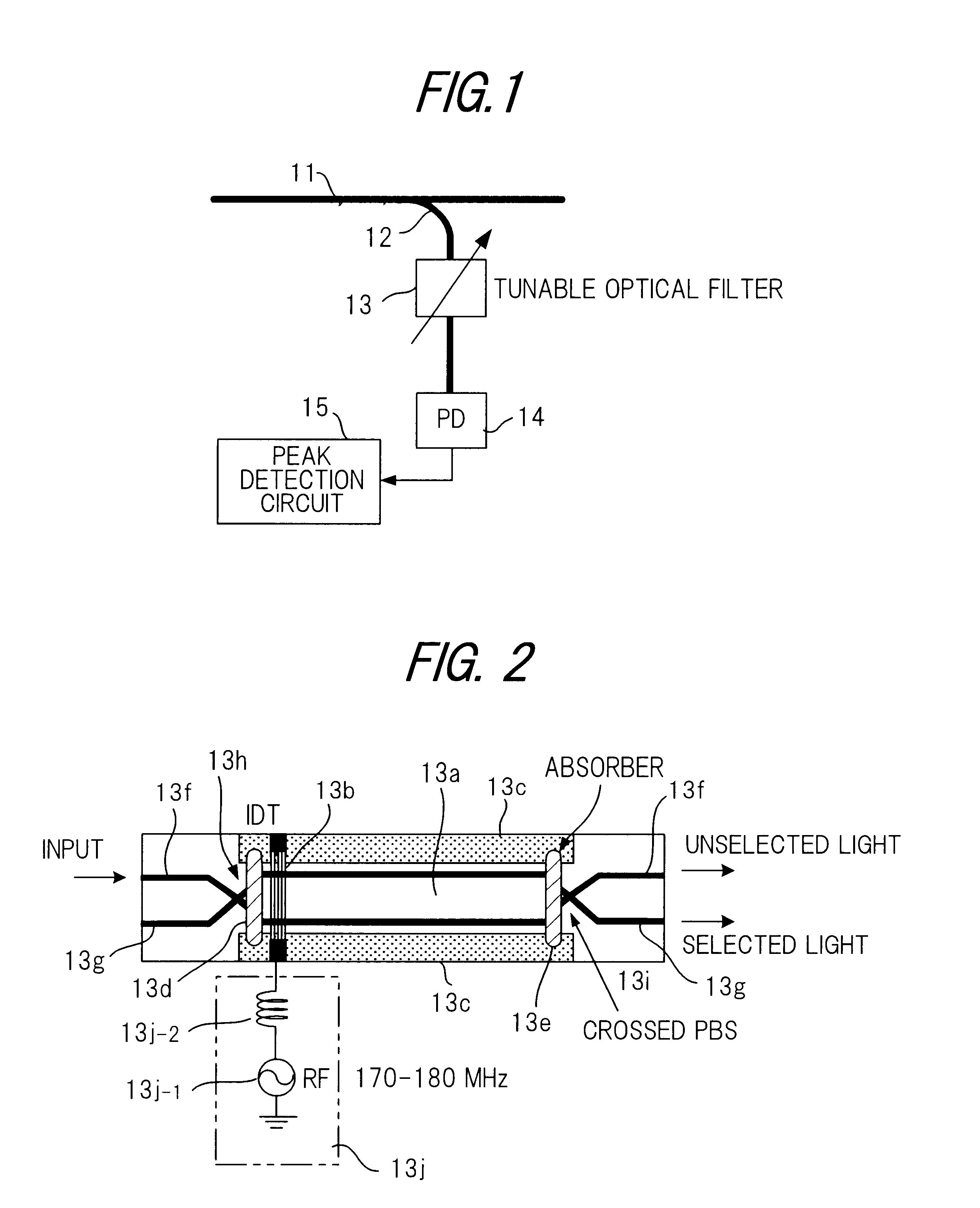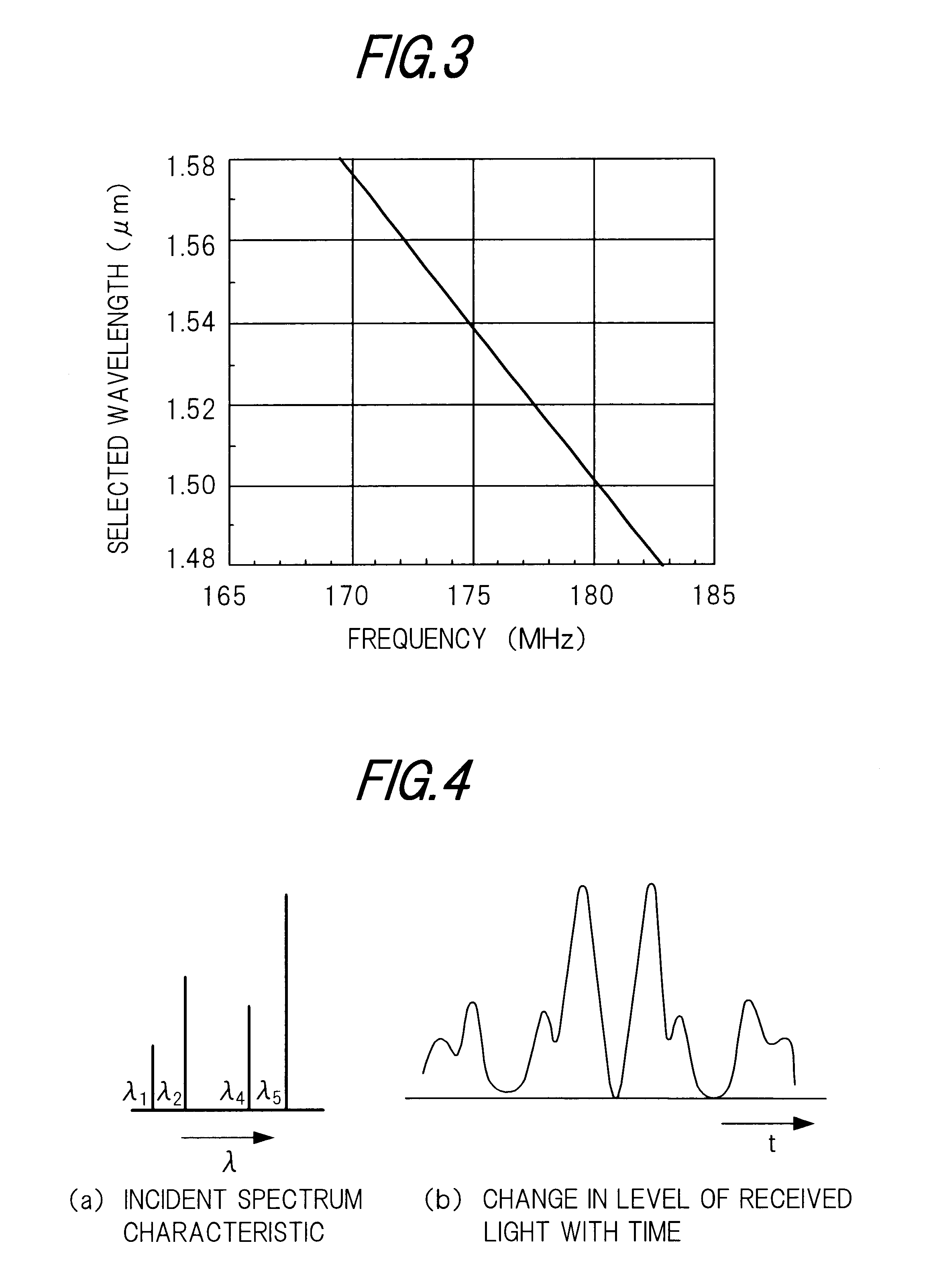Apparatus for detecting peaks of wavelength-division-multiplexed light, and apparatus for controlling said light
a technology of wavelength-division multiplexed light and apparatus, applied in the direction of electromagnetic repeaters, transmission monitoring, instruments, etc., can solve the problems of reducing the cost of optical transmission systems, affecting the transmission quality, and deploying a level detector or level controller for each wavelength at all repeater stages, etc., and achieves the effect of simple structur
- Summary
- Abstract
- Description
- Claims
- Application Information
AI Technical Summary
Benefits of technology
Problems solved by technology
Method used
Image
Examples
first embodiment
(a) First Embodiment
FIG. 7 is a diagram showing the construction of a first embodiment of an apparatus for controlling wavelength-division-multiplexed light according to the present invention. The apparatus includes an optical fiber 21 through which wavelength-division-multiplexed light propagates; an optical branching coupler 22 for branching the wavelength-division-multiplexed light; a wavelength-division-multiplexed light peak detector 23 for detecting the peaks of wavelength-division-multiplexed light; and a device 24, such as a variable light attenuator, for controlling the optical level of output light. Examples of the device for controlling the optical level of output light are, in addition to the variable light attenuator, an external optical modulator and a semiconductor optical amplifier.
The wavelength-division-multiplexed light peak detector 23 has a structure identical with that of the apparatus for detecting the peaks of wavelength-division-multiplexed light shown in FI...
second embodiment
(b) Second Embodiment
FIG. 8 is a diagram showing the construction of a third embodiment of an apparatus for controlling wavelength-division-multiplexed light according to the present invention. Components in FIG. 8 identical with those of the first embodiment shown in FIG. 7 are designated by like reference characters. The second embodiment shown in FIG. 8 differs from the first embodiment in that an optical-fiber amplifier is used instead of the variable light attenuator as means for controlling the level of the output light.
As shown in FIG. 8, there are provided optical isolators 25, 26; a wavelength multiplexing coupler 27 for multiplexing excitation light and signal light; an optical amplifying fiber 28, such as erbium-doped fiber (EDF), for amplifying signal light; and a laser diode (excitation light source) 29 for generating excitation wavelength light the wavelength of which is shorter than that of the signal light but the energy of which is greater, and inputting this light ...
third embodiment
(c) Third Embodiment
FIG. 9 is a diagram showing the construction of a third embodiment of an apparatus for controlling wavelength-division-multiplexed light according to the present invention. Components in FIG. 9 identical with those of the second embodiment shown in FIG. 8 are designated by like reference characters. The third embodiment shown in FIG. 9 differs from the second embodiment in that (1) a control loop for uniformalizing maximum value and a control loop for uniformalizing total power are provided as means for controlling the level of output light, and (2) control for uniformalizing maximum value and control for uniformalizing total power is performed appropriately based upon the difference between the maximum peak value and set peak value.
According to the first and second embodiments, control is carried out on the assumption that the level error of each channel (the light of each wavelength) is small. However, depending upon conditions, there are cases where the maximu...
PUM
 Login to View More
Login to View More Abstract
Description
Claims
Application Information
 Login to View More
Login to View More - R&D
- Intellectual Property
- Life Sciences
- Materials
- Tech Scout
- Unparalleled Data Quality
- Higher Quality Content
- 60% Fewer Hallucinations
Browse by: Latest US Patents, China's latest patents, Technical Efficacy Thesaurus, Application Domain, Technology Topic, Popular Technical Reports.
© 2025 PatSnap. All rights reserved.Legal|Privacy policy|Modern Slavery Act Transparency Statement|Sitemap|About US| Contact US: help@patsnap.com



